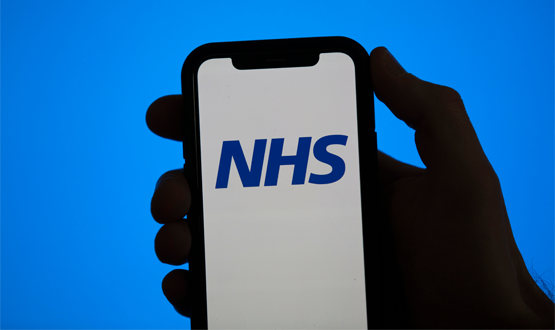1,700 cases of potential harm from undelivered medical mail
- 27 June 2017

At least 1,700 cases of potential patient harm have been identified after a huge medical correspondence storage blunder, according to a new report by the NAO.
The National Audit Office’s NAO report into the 709,000 items of unprocessed medical correspondence, published today, also said NHS England estimates the cost of fixing the problem will run into millions of punds.
In February, health secretary Jeremy Hunt faced urgent questions in the Commons after a report in The Guardian found that hundreds of thousands of letters sent between GPs and hospitals in the five years to 2016 never arrived at their destination. About 500,000 of the letters contained confidential clinical data.
Instead, NHS Shared Businesses Services (NHS SBS), the company charged with transporting the letters, stored the information in a warehouse, in some case for years at a time.
The NAO’s report said the number of cases of patient harm could rise as GPs have yet to respond on 175,000 items.
The letters that were stored and may have resulted in patient harm included child protection notes, medical records and changes to medication were amongst the correspondence undelivered.
An NHS SBS spokesperson said in a statement it regrets the situation.
“Today’s NAO report highlights a number of failings in the mail redirection service provided to NHS England. We regret this situation and have co-operated fully with the National Audit Office in its investigation.”
“All of the correspondence backlog has now been delivered to GP surgeries for filing and NHS England has so far found no evidence of patient harm. NHS SBS no longer provides this mail redirection service.”
The mistake has been condemned by patient protection groups. Liz McAnulty, chair of the Patients Association, said “the NHS’s failure to manage essential medical correspondence effectively is scandalous, and the lack of transparency about these errors is at least as bad”.
NHS England has estimated a £6.6 million admiration cost for the error, and it has already paid £2.5 million to over 7,300 GP practices to compensate for the extra workload in resolving it.
The NHS SBS was employed in the in the East Midlands, the south-west and north-west London with primary care support services that included redirecting medical correspondence.
Between 2011 and March 2016 a backlog built up, where it increased from 8,000 to 435,000 items. The final figure of 709,000 was confirmed when more boxes were found.
The NAO said that NHS SBS managers had been aware of the clinical risk to patients since January 2014, but they had not developed a plan to deal with a backlog.
The NAO’s report said NHS England was unimpressed with NHS SBS’s way of handling the incident, describing it as “dissatisfied”.
In February when Hunt faced questions in the Commons, Labour shadow health secretary, Jon Ashworth, called the missing data a “shambles that has put patient safety at risk” that the Government had then tried to “cover-up”.
“It is an absolute scandal.”
Hunt was also grilled about the time taken to alert the public and Parliament to the incident, with the Department only informing Parliament on 21 July 2016.
The NAO’s report said that in January 2014, a review by NHS SBS had found a backlog of 205,000 items and highlighted the clinical risk. In the summer of 2015, an administrator had repeatedly raised concerns.
In March 2016, NHS SBS informed NHS England and the Department of Health that it had discovered 435,000 items of unprocessed clinical correspondence.
The report said that the public and Parliament were not alerted by the Department as “it was considered that it did not have an accurate picture of the scale of the incident or of the potential harm to patients”.
An NHS England spokesperson said in a statement to Digital Health News that it was “deeply concerned to be belatedly informed by SBS in March 2016 about its backlog of unprocessed correspondence”.
“We immediately set up a team, including clinical experts, to manage the incident, and all relevant correspondence has now been sent back to GPs for review. None of the patients whose cases have been reviewed to date have been harmed by the delay in correspondence.”
A Department of Health spokesperson provided a statement that said: “As the NAO report highlights, patient safety has been our first priority and no cases of harm have been identified to date”.
It added that along with NHS England, the Department has been “very mindful of appropriate transparency while working to make sure this does not happen again”.
NHS SBS is co-owned by the Department of Health and the French company Sopra Steria. Its main business is managing supplier contracts on the behalf of the NHS with revenues of about £87 million for these services.
The Department of Health has a 49.99% share in the NHS SBS.





3 Comments
What really worries me is not the SBS cock-up, but the fact that 700,000 vital letters etc were wrongly addressed in the first place. This demonstrates unbelievable sloppiness by hosptal staff – and some GPs in finding the right address. It demonstrates the low worth that hospital staff put on communicating with other bits of the Health Service. This disregard is deeply embedded in consultants’ culture, and is not checked by hospital managers.
GPs are also at fault because they do not seem to chase the documents that have gone astray.
As a patient, I give my GP a hard time if test results, scan results etc are late. Clearly, many patients don’t bother, hoping that no news is good news.
Jeremy Hunt thinks that digitalisation will stop this. Yes, it will, to some extent, but sloppiness will remain endemic, unless Royal Colleges, NHSE and uncle Tom Cobbly make a determined effort to stamp it out.
I the patient will continue to suffer. Only this week, on logging in to a hospital appointment, I found that my GP’s address listed on the check-in machine was three years out of date!
We GPs have been at the forefront of “modernising” – we all have EPRs, and many surgeries are almost paperless. Many of us use email extensively and refer electronically (in a variety of ways).
We would love all hospital correspondence to be sent to us electronically – we have the systems in place to receive them already. But we don’t have any control over trusts and their IT goals/priorities, however much we ask them.
How was this correspondence being sent and how on earth did such massive numbers go “missing” only to magically turn up in boxes?
This is a shocking reflection of the obstinacy of GPs and hospitals towards modernising.
Comments are closed.